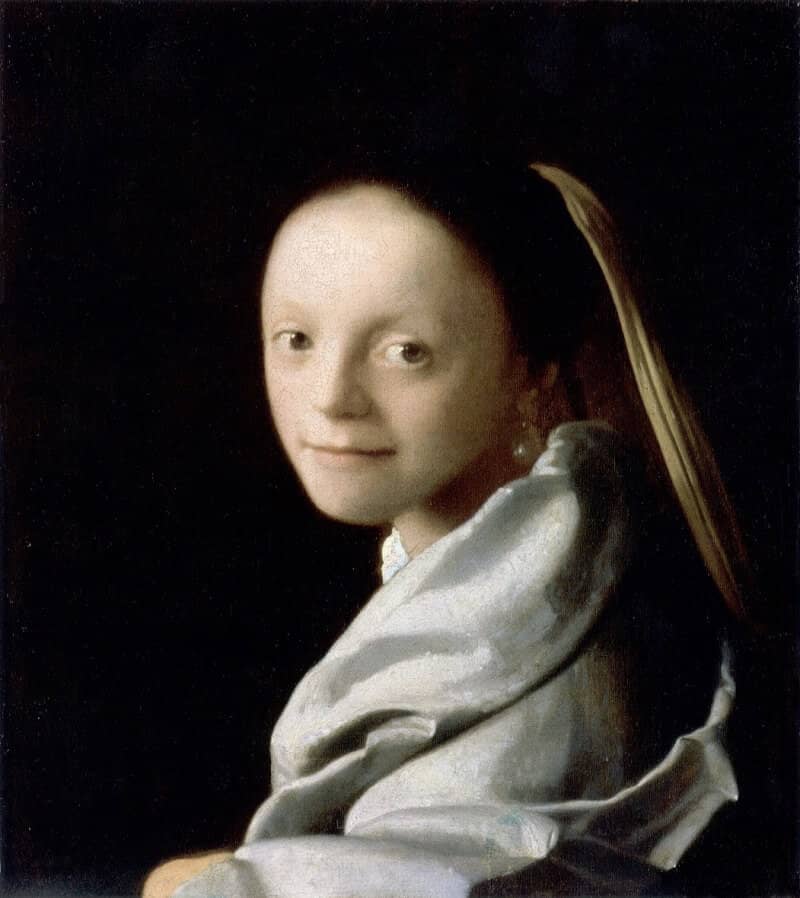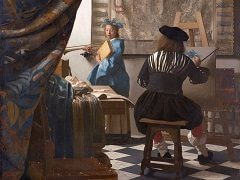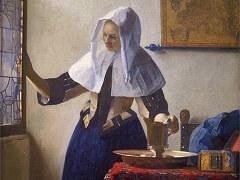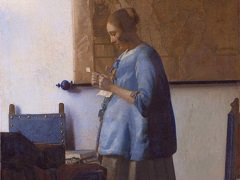Study of a Young Woman, 1665 by Johannes Vermeer

Study of a Young Woman with many shifts of color in changing light, was recognized in Vermeer's day as one of the most challenging tests of artistic ability. The materials depicted in the present painting are not secondary but essential motifs, meant for the connoisseur's eye and imagination. The coloring of the face and lips accords with that of the costume, in a more muted manner than that found in Girl with a Pearl Earring. The gradual transition from light to shadow on, the young woman's intriguing face, which would probably not respond as well to the strong light employed in the Mauritshuis picture, is in sympathy with the subtle shifts of tone in the drapery. In the other work a contemporary jacket, strongly colored and with faceted folds, provides a solid base for the sculptural head. The modeling, the palette, and the figure's glance have a directness not found in the Wrightsman painting, where the contours are blurred, the shadows are softer, and the highlights are either muted (as in the angular pocket of folds to the lower right) or glisten like a glass mosaic, the staccato pattern of which hints at the weave of luxurious fabric. There is something dreamlike about the illumination in Study of a Young Woman that enhances the sense of disengagement from the viewer in both form and mood. At the bottom of the picture, the resting forearm and back of the wrist represent one of Vermeer's willful elisions of what is known (in this case, anatomy) in favor of what might be seen (depending upon the observer). The flesh tone also slightly enhances the viewer's concentration upon the face.




















